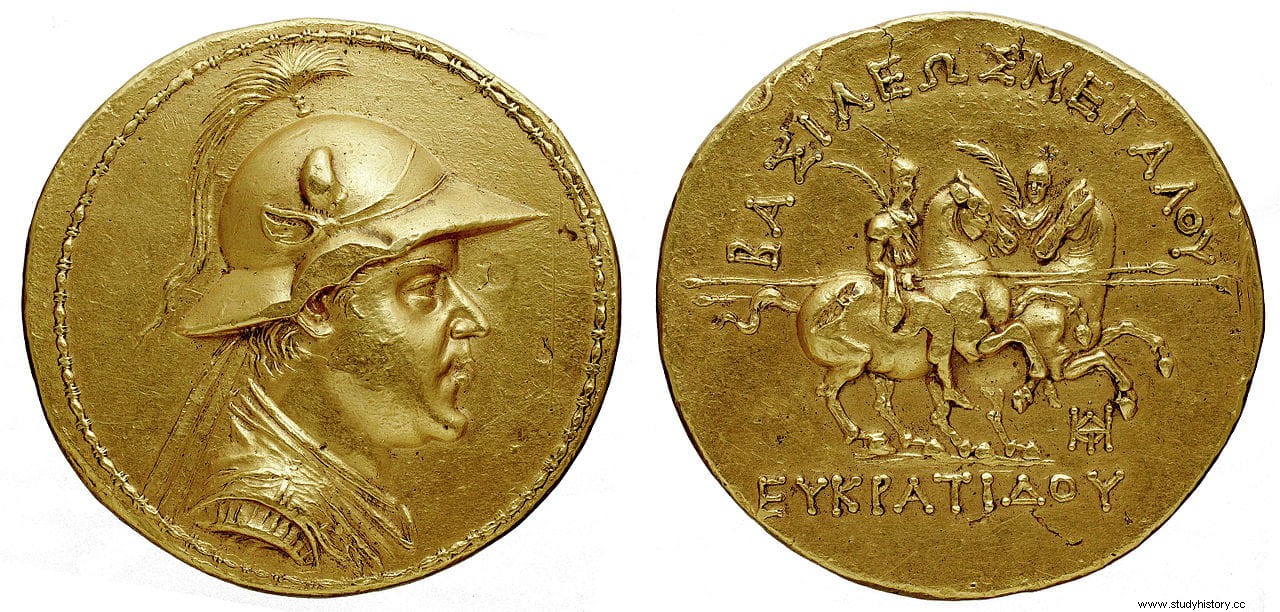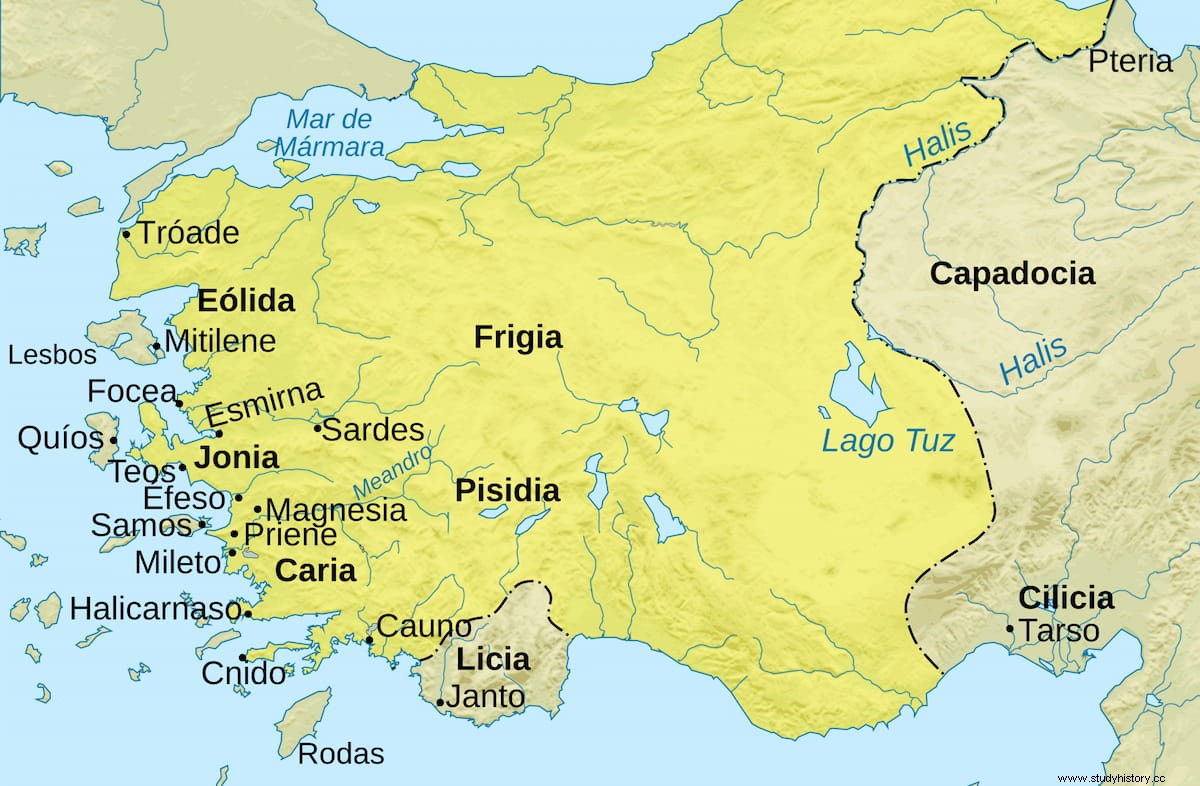If we were to ask about a metal alloy used since the beginning of history, the unanimous answer would be, most certainly, bronze. And, indeed, this combination of copper and tin gives name to an entire period of Prehistory, so we could consider it perhaps the most important until the appearance of others. Of the ancient alloys, perhaps the most significant case was the electro , which mixed gold and silver, enjoying a certain prestige.
Of course, there were more alloys in those remote times. They were the hepatizon or black Corinthian bronze (copper or bronze alloyed with gold and/or silver); brass (copper with zinc), panchaloa Indian (made of the five sacred metals, gold, silver, copper, iron and zinc) or those that combined gold with copper, such as tumbaga of pre-Hispanic America and the shakudō Japanese.
These are just a few, since others could be mentioned, including those of more uncertain composition, such as orichalcum or thokcha Tibetan.

The electro , we said, is composed of gold and silver; it does so in a proportion of four parts of the first and one of the second, but there are also traces of other metals such as platinum or, above all, copper. This is because it is not an artificial alloy but a natural one, although it can also be manufactured, in which case the compositional percentages change a bit, reducing the gold. How many? It depended on the place. The chemical analysis of coins from Phocaea reveals that they had 55% but in Lydia it could be even lower, between that 55 and 45%; instead, in Anatolia there was electro with a gold content between 70 and 90%.

As you can see, we go back to Greek antiquity and, in fact, the electro is quoted in The Odyssey and in the Book of Ezekiel . Now, Homer's poem is dated between the 8th and 7th centuries BC, and that of the Hebrew prophet one later.
There are even older sources:the first documented account of the expedition that Pharaoh Sahure sent to the country of Punt in the 25th century BC. account that significant amounts of myrrh, malachite and electro were brought from there . Likewise, we know that this alloy was used to cover the pyramidion, that is, the top of the obelisks and pyramids, making it shine because that was where heaven and earth met and, therefore, where the solar disk that represented Ra rested. .
Of course, it had other less metaphorical uses -vessels, tools- and the most obvious was coinage. In fact, the first metallic coins were made with electro . They were found in the Temple of Artemis, in Ephesus, and are dated between 625-600 BC, during the reign of Aliates, the fourth monarch of the Mermnada dynasty, although some historians go back chronologically, to the period of King Gyges, the founder of said dynasty.
Aliates was the one who endowed Lydia with splendor, thanks to the important minting of coins favored by the abundance of gold in the river Pacífico, which originated the myth of King Midas. Aliates coins are usually stamped with a lion's head, the symbol of the dynasty, and were the first to standardize their weight, so that a stater of electro (that's where the word comes from; stater=weight) was equivalent to 168 grains of wheat.

The stater was the usual monetary measure in the Hellenic world and, by extension, throughout the Mediterranean until the Romans introduced the denarius. Gold staters were also minted, albeit in a very localized way and used as a unit of account rather than currency.
However, the electro it tended to prevail over gold in coins because it was harder and, therefore, it had greater resistance over time and, on the other hand, in those early numismatic eras the technique of refining gold focused only on specific sites.
In addition, it was extracted in abundance from the deposits of the Lydian mount Tmolo and from the alluvial deposits of the Pactolo River. However, the electro problem (at least from the natural) it was impossible to know exactly what percentage of gold it had, which made it difficult to value the currency and had a negative impact on trade.

The solution was to introduce the kroisos , a stater of pure gold or silver, without alloys and easy to value. Lydia was also the place of its appearance but now during the reign of Croesus, son of Aliates and last king of the aforementioned Mermnada dynasty. This monarch took over all the polis of Asia Minor and created an ephemeral empire (fourteen years) but very prosperous, to the point that the word creso It is synonymous today with rich.
The kroiseoi They weighed about 10.7 grams, although over time they tended to reduce that weight to 8.1 grams with the aim of eliminating the devalued electros from circulation, although they continued on the de facto market until the second half of the 4th century BC.
After their conquest of Lydia, the Achaemenids continued to mint kroiseoi in Sardes until in the year 515 B.C. Darío I replaced them with the darics, which could also be made of gold or silver but weighing 8.4 grams.

The Greeks called it electro to amber, so the denomination they used to refer to that metal was white gold , surely because often -not always, it depended on the silver content it contained- it had a less intense shine than normal gold.
Currently, the term white gold It is used to designate an alloy of gold with some metal such as nickel, manganese or palladium that is usually applied in jewelry instead of platinum because it is cheaper than platinum.
The white gold became green gold if it was artificial electro. Interestingly, the green gold It had a very particular use until relatively recently, a decade ago:it was the alloy with which the Nobel Prize medals were made, which were later given a gilt gold plating.
